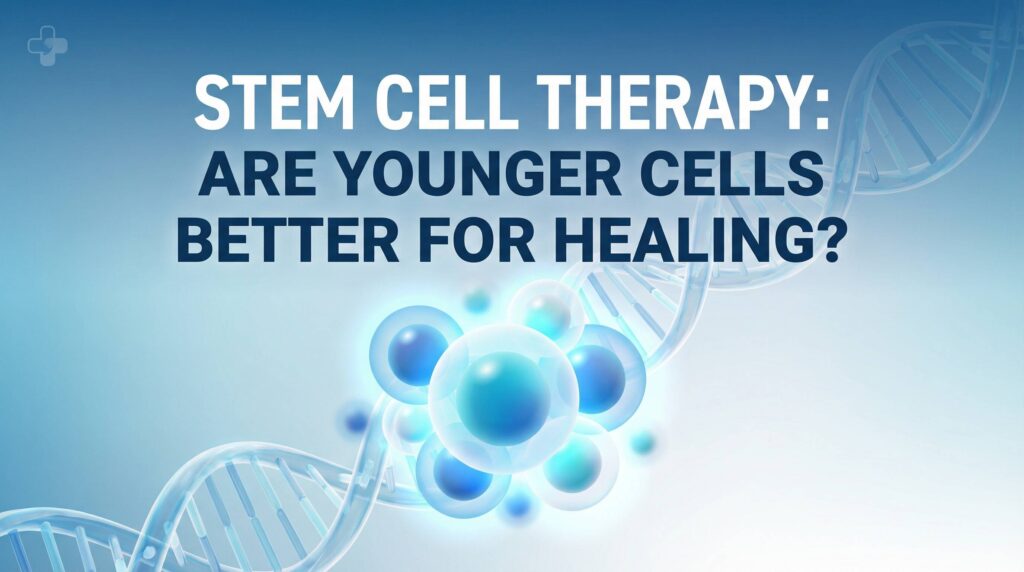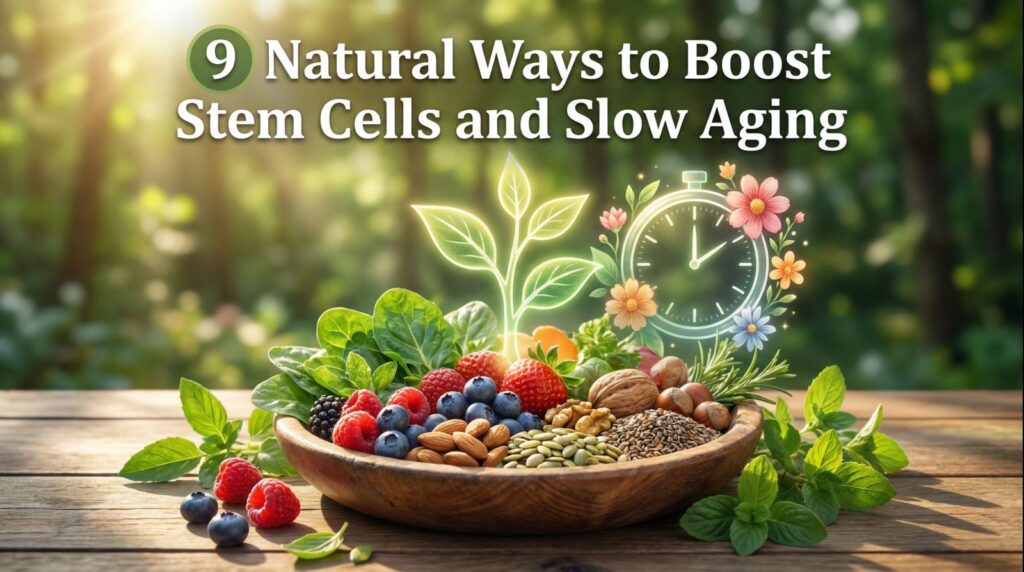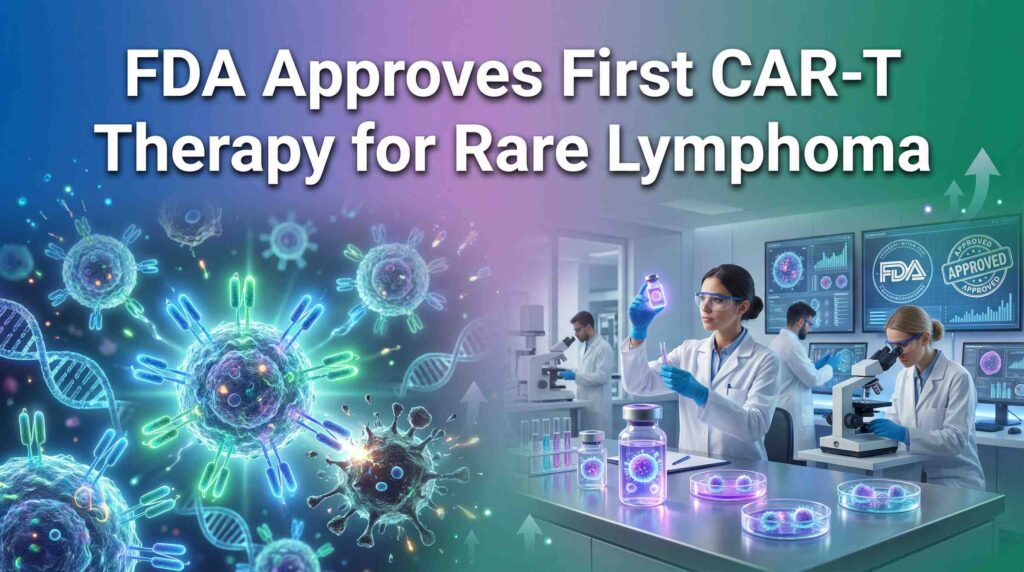Imagine a bustling city where every individual has a unique job to do. Some are builders, some are healers, and some are protectors. This city is like our body, and the individuals? They’re our cells. Now, there’s a special group in this city, the jack-of-all-trades, ready to become any professional needed. These are our stem cells. Stem cells are like the superheroes of our cellular world, with the potential to transform into many different cell types in the body. They’re the unsung heroes that work behind the scenes, ensuring everything runs smoothly.
Now, let’s dive deep into a gold mine of these superheroes – the bone marrow. Hidden within our bones, this marrow isn’t just a squishy substance; it’s a treasure trove of various types of stem cells. From the well-known hematopoietic stem cells that give rise to our blood cells to the versatile mesenchymal stem cells that can become bone cells, muscle cells, and more, the bone marrow is a hub of cellular potential.
But why all the buzz around stem cells? Well, they’re not just about understanding our body’s inner workings. Stem cell research and therapy are opening doors to treat diseases that once seemed untouchable. From stem cell transplants to innovative stem cell therapies, the possibilities are vast and exciting.
In this article, we’ll embark on a journey, exploring the different types of stem cells found in bone marrow. We’ll demystify terms like embryonic stem cell and induced pluripotent stem cells, and shed light on how stem cells could revolutionize medicine. So, whether you’re a curious soul or someone keen on the stem cell basics, buckle up! We’re about to dive into a world where cells offer endless possibilities.
Understanding Bone Marrow: A Vital Tissue
Let’s start our journey by stepping into the heart of our bones. Imagine the bone marrow as a bustling factory, humming with activity, where the magic of cell production happens. It’s like the control center of a spaceship, directing and producing the necessary crew members to keep the ship (our body) functioning.
The bone marrow is not just any tissue; it’s the birthplace of many cell types. Think of it as a nursery where new cells are nurtured and prepared for their roles in the body. From the defenders (white blood cells) to the transporters (red blood cells) and even the repair crew (platelets), the bone marrow ensures our body has a steady supply of fresh recruits.
Hematopoietic stem cells are the stars of this factory. They’re like the master chefs, whipping up a variety of dishes (or in this case, blood cells) to suit our body’s needs. Whether it’s creating oxygen-carrying red blood cells or immune-boosting white blood cells, these stem cells are on the job.
But the bone marrow isn’t just about blood. Nestled within are mesenchymal stem cells, the versatile artists of the stem cell world. These cells can transform into many different types, from bone cells to muscle cells and even fat cells. It’s like having a Swiss army knife in our cellular toolkit!
Now, you might be wondering about embryonic stem cells. While they’re a significant player in the stem cell research arena, they’re not native to the bone marrow. Instead, they come from the inner cell mass of early embryos and have the potential to become any cell type in the body. It’s like having a blank canvas that can be painted in any color imaginable.
In contrast, adult stem cells, like those found in bone marrow, are more specialized. Think of them as seasoned professionals, experts in their fields but with a little less flexibility than their embryonic counterparts.
As we delve deeper, we’ll uncover the potential of these stem cells, from therapy applications to the future of regenerative medicine. The bone marrow might be hidden away, but its contributions to our health and well-being are monumental. So, let’s continue our exploration and discover the wonders that stem cells offer.
Hematopoietic Stem Cells (HSCs): The Blood Cell Producers
Imagine a magical tree in a vast forest. This tree has the unique ability to produce various fruits, each with its distinct flavor and purpose. In the world of stem cells, the hematopoietic stem cells (HSCs) are that magical tree, giving rise to a diverse range of blood cells that our body relies on daily.
Hematopoietic stem cells are like the unsung heroes backstage, ensuring the show goes on without a hitch. They reside in the bone marrow, constantly working, dividing, and differentiating to replenish our blood supply. It’s like a never-ending assembly line, producing everything our body needs, from the oxygen-carrying red blood cells to the disease-fighting white blood cells and the clot-forming platelets.
But what makes HSCs so special?
- Versatility: HSCs can become any type of cell found in the blood. It’s like having a master key that can unlock multiple doors. Whether our body needs more oxygen transporters or defenders against infections, HSCs have got it covered.
- Self-renewal: These stem cells have the incredible ability to make copies of themselves. It’s akin to a fountain of youth, ensuring a continuous supply of fresh stem cells ready to spring into action.
- Therapeutic Potential: The magic of HSCs isn’t just limited to natural processes. In the medical world, stem cell transplants, especially bone marrow transplants, harness the power of HSCs to treat various conditions, from blood disorders to certain types of cancer.
But it’s not all roses. Like every superhero, HSCs have their challenges. Sometimes, the body might not produce enough blood cells, or the produced cells might not function correctly. In such cases, stem cell therapies and transplants come to the rescue, offering a glimmer of hope to many.
As we journey further, we’ll encounter another fascinating resident of the bone marrow – the mesenchymal stem cells. While HSCs are the masters of blood, these stem cells offer a broader range of possibilities, from forming bones to healing injuries. So, stay with us as we delve deeper into the captivating world of stem cells and their boundless potential.
Mesenchymal Stem Cells (MSCs): The Multifaceted Powerhouses
Picture this: a talented artist capable of creating masterpieces in various art forms, be it painting, sculpture, or music. In the realm of stem cells, mesenchymal stem cells (MSCs) are those multi-talented artists. They’re not just confined to one role; they have the potential to wear many hats, transforming into a myriad of cell types.
Nestled within our bone marrow, MSCs are like the unsung maestros orchestrating a symphony of cellular regeneration. Their versatility is truly astounding. Let’s break down some of their standout roles:
- Bone Builders: MSCs can differentiate into bone cells, playing a pivotal role in bone repair and growth. It’s like having a construction crew on standby, ready to fix any structural issues in our skeletal system.
- Cartilage Crafters: Got joint issues? MSCs are on the case! They can transform into cartilage cells, ensuring our joints remain smooth and functional. Think of them as the lubrication experts, preventing those creaky, painful joint moments.
- Fat Formers: While we often wish to avoid accumulating too much fat, it’s essential for insulation and energy storage. MSCs can become fat cells, managing our body’s fat reserves.
- Muscle Makers: From lifting weights to simply moving around, our muscles are constantly at work. MSCs can differentiate into muscle cells, aiding in muscle repair and growth. They’re like the personal trainers of the cellular world, ensuring our muscles are strong and healthy.
But MSCs aren’t just about forming tissues. Their therapeutic potential is vast. In the world of regenerative medicine, MSCs are making waves. They’re at the forefront of stem cell therapies, offering hope for conditions like osteoarthritis, spinal cord injuries, and even heart diseases. Imagine a future where damaged tissues could be repaired using our own cells, reducing the need for surgeries or transplants. That’s the promise MSCs hold.
Moreover, unlike embryonic stem cells, which come with ethical concerns, MSCs are adult stem cells derived from our own bodies, sidestepping many of the controversies. It’s like having a renewable resource right within us, ready to heal and regenerate.
As we continue our exploration, we’ll delve into other lesser-known but equally vital stem cells in the bone marrow. The journey is far from over, and the wonders of stem cells are just beginning to unfold. So, let’s keep the momentum going and discover more about these cellular marvels!
Other Notable Stem Cells in Bone Marrow
Venturing deeper into the bone marrow forest, we stumble upon some lesser-known but equally fascinating inhabitants. These stem cells might not always be in the limelight like their hematopoietic and mesenchymal counterparts, but they play crucial roles in maintaining our body’s harmony. Let’s meet some of these unsung heroes:
- Endothelial Progenitor Cells: Imagine a team dedicated to building and repairing the highways and roads of a city. In our body, these are the endothelial progenitor cells, crucial for blood vessel formation. They ensure our circulatory system remains robust, delivering nutrients and oxygen to every cell in the body.
- Stromal Cells: Think of these as the backstage crew in a theater production. They might not be the main actors, but without them, the show can’t go on. Stromal cells support the bone marrow microenvironment, providing a nurturing space for other stem cells to thrive and differentiate.
- Induced Pluripotent Stem Cells (iPSCs): These are the shape-shifters of the stem cell world. Originally adult cells, like skin cells, scientists have found ways to “reprogram” them to behave like embryonic stem cells. It’s like turning back the clock, giving these cells a fresh start and a broader range of possibilities. Their discovery has been a game-changer in stem cell research, offering the potential of embryonic stem cells without the ethical dilemmas.
- Tissue-Specific Cells: As the name suggests, these stem cells are specialists, dedicated to forming specific tissues. Whether it’s nerve cells for the brain, heart muscle cells for the heart, or any other specialized cell, these stem cells ensure every part of our body gets the right type of cell it needs.
The beauty of the bone marrow is its diversity. It’s like a bustling metropolis, with every inhabitant playing a unique role, ensuring the city (our body) functions seamlessly. From the well-known giants like hematopoietic stem cells to the unsung heroes like stromal cells, each stem cell type contributes to our health and well-being.
As we journey forward, we’ll delve into the clinical significance of these stem cells, exploring their potential in treatments, therapies, and the future of medicine. The world of stem cells is vast and ever-evolving, and we’re just scratching the surface. So, stay with us as we continue to unravel the mysteries and potentials of these cellular wonders!
The Clinical Significance of Bone Marrow Stem Cells
Stepping out of the cellular realm and into the world of medicine, the potential of bone marrow stem cells becomes even more evident. It’s like discovering a gold mine in your backyard; the possibilities are vast and transformative. Let’s dive into the medical marvels these cells offer:
- Bone Marrow Transplantation: Often, when we hear about bone marrow transplants, it’s in the context of treating severe diseases like leukemia or lymphoma. These transplants replace damaged or destroyed bone marrow with healthy bone marrow stem cells. It’s akin to rebooting a computer system, clearing out the glitches and restoring optimal function.
- Regenerative Medicine: Imagine a world where damaged tissues or organs could be repaired or even replaced using stem cells. That’s the promise of regenerative medicine. From heart diseases where heart muscle cells need rejuvenation to spinal cord injuries where nerve cells are damaged, stem cells offer hope for a brighter, healthier future.
- Stem Cell Therapies: Beyond transplants, stem cell therapies are emerging as potential treatments for a range of conditions. Whether it’s using stem cells to treat degenerative diseases like Parkinson’s or harnessing their potential to combat autoimmune disorders, the horizon looks promising.
- Research and Future Prospects: The realm of stem cell research is ever-evolving. Every day, scientists are uncovering new facets of these cells, from understanding their basic biology to discovering novel therapeutic applications. It’s like exploring an uncharted territory, with every discovery opening up new avenues of hope and treatment.
- Ethical and Practical Challenges: While the potential of stem cells, especially embryonic stem cells, is vast, it’s not without challenges. Ethical dilemmas, practical limitations, and the body’s potential rejection of transplanted cells (seeing the cells as foreign) are hurdles that researchers and clinicians grapple with. But with advancements in technology and a deeper understanding of stem cell biology, many of these challenges are being addressed.
In essence, the clinical significance of bone marrow stem cells is monumental. They’re not just cellular entities; they’re potential lifesavers, game-changers in the world of medicine. As we continue to harness their potential, the future of healthcare looks brighter, more innovative, and filled with hope. So, as we journey forward, let’s remain optimistic and excited about the transformative power of stem cells and their impact on our health and well-being.
Ethical Considerations and Challenges
Navigating the vast ocean of stem cell potential, we inevitably encounter stormy waters. The realm of stem cells, especially when we touch upon embryonic stem cells, is rife with ethical dilemmas and challenges. It’s like standing at the crossroads of innovation and morality, trying to find a path that respects both science and ethics.
- The Embryonic Stem Cell Debate: At the heart of the ethical debate lies the use of embryonic stem cells. Derived from the inner cell mass of early-stage embryos, these cells have unparalleled potential. They can become any cell type in the body, from brain cells to muscle cells. But the question arises: At what cost? The process often involves the destruction of the embryo, leading to moral and ethical concerns, especially among various religious and philosophical groups.
- Sourcing and Consent: Where do we source these stem cells? Whether it’s from donated embryos left over from IVF treatments or specially created embryos for research, the issue of consent and the rights of donors come into play. It’s akin to seeking permission to use a precious resource, ensuring it’s used respectfully and ethically.
- Induced Pluripotent Stem Cells (iPSCs) – A Middle Ground?: Scientists, in their quest to bypass the ethical challenges of embryonic stem cells, have developed iPSCs. By reprogramming adult cells to behave like embryonic stem cells, they offer a potential middle ground. It’s like finding an alternative route on a map, bypassing the tricky terrains. But even iPSCs come with their own set of challenges, from safety concerns to the efficiency of reprogramming.
- Therapeutic Misconceptions: With the buzz around stem cell therapies, there’s a risk of misinformation. Patients might believe that these therapies are guaranteed cures, leading to unrealistic expectations. It’s essential to differentiate between experimental treatments and proven therapies, ensuring patients are well-informed.
- Commercial Exploitation: The promise of stem cells has led to a surge in clinics offering unproven and unregulated stem cell treatments. It’s like the wild west, where regulations are lax, and patients might be exploited. Ensuring stringent guidelines and regulations is crucial to protect patients and maintain the integrity of stem cell research.
In conclusion, while the potential of stem cells is vast, it’s essential to tread carefully, balancing the scales of innovation and ethics. As we continue to explore and harness the power of stem cells, it’s crucial to do so with respect, integrity, and a deep sense of responsibility. After all, at the heart of all scientific endeavors lies the well-being and betterment of humanity.
Conclusion
As we wrap up our journey through the intricate world of stem cells, it’s evident that these tiny powerhouses hold immense promise for the future of medicine and human health. Imagine holding a magic wand that has the potential to heal, regenerate, and transform – that’s the essence of stem cells for us.
From the depths of our bone marrow to the cutting-edge labs where scientists delve into the mysteries of cells, the story of stem cells is one of hope, innovation, and potential. Whether it’s the life-saving hematopoietic stem cells that replenish our blood or the versatile mesenchymal stem cells that can wear multiple hats, each stem cell type offers a unique gift.
But, like any powerful tool, it comes with its challenges. Ethical dilemmas, research hurdles, and the quest for safe and effective stem cell therapies are all part of the narrative. It’s a reminder that with great power comes great responsibility.
We, at this platform, believe in the transformative potential of stem cells. As we’ve journeyed together through the complexities of stem cell research, therapies, and their clinical significance, our hope is that you’ve gained a deeper appreciation for these cellular marvels.
The future is bright, filled with possibilities and breakthroughs waiting to happen. As we continue to explore, research, and harness the power of stem cells, we’re not just looking at a medical revolution; we’re envisioning a future where diseases are not dead-ends but mere challenges waiting to be overcome.
Thank you for joining us on this enlightening journey. As the world of stem cells continues to evolve, we remain optimistic and excited about the boundless opportunities they present. Here’s to a future where the wonders of stem cells become an integral part of our everyday lives!



